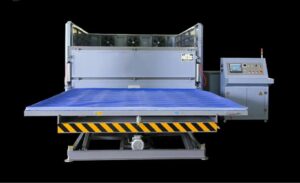The temperature range for laminated glass production can vary depending on the specific materials and processes used. Here are some key points to consider:
Laminated glass is produced by bonding two or more layers of glass together with a plastic interlayer, such as polyvinyl butyral (PVB), thermoplastic polyurethane (TPU), or ethylene-vinyl acetate (EVA).The assembly of glass and interlayer is heated for the initial melt, and then heated again under pressure in an autoclave (oven) to achieve the final bonded product.The temperature for laminating glass typically ranges from 150 °F (65 °C) to 350 °F (175 °C).The most suitable temperature range for laminating glass is around 200-250 °F (93-121 °C) to achieve a perfect lamination finish.It is important to choose the appropriate temperature based on the type of laminating film and the thickness of the material being laminated.Using a temperature above 300 °F (149 °C), especially with thin material, can potentially damage the document or cause bubbles or wrinkles on the laminate surface.
In summary, the temperature range for laminated glass production is typically between 150 °F (65 °C) and 350 °F (175 °C), with the most suitable range being around 200-250 °F (93-121 °C) for optimal results. It is important to consider the type of laminating film and the thickness of the material when selecting the appropriate temperature.

